Paterson Family, Kaharoa
Jamie and Chris’ 127 ha dairy farm is located at Kaharoa, approximately 20 km from Rotorua in the Bay of Plenty. Originally a bare grazing block, the Paterson’s converted the land to dairy, aptly naming the property Hameldaeme (‘Home will do me’ in Gaelic). The farming business expanded in 2012 with their son and daughter-in-law joining the farm business.
Video
Download this story
Download a copy of the Paterson's story here [PDF, 486 KB]
Overview
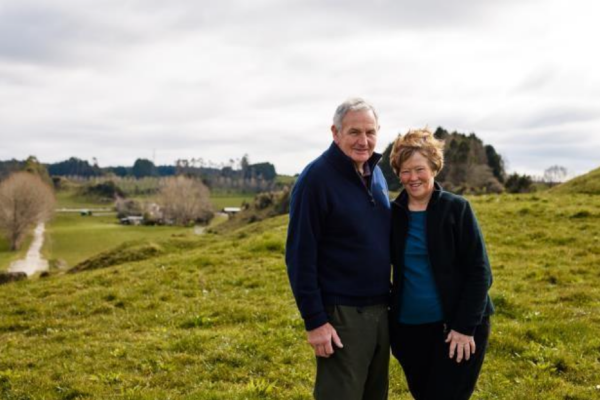
Located within the Lake Rotorua catchment, the soils are primarily free draining pumice, with the area receiving an average rainfall of 2,400mm per year. The enterprise mix of the farm is presented in Table 1.
110 ha is classified as the milking platform, 5.4 ha is steeper drystock land, 6.7 ha is plantation forestry (radiata pine and eucalyptus), as well as some riparian planting. Their annual milk production was 110,000 kg MS from 296 peak Friesian cows calved. Around 5 ha of turnips are grown each year to provide additional summer feed, and the farm was importing 38 tonnes of palm kernel and 10 tonnes of molasses annually.
Table 1: Paterson family land areas (ha)
| Enterprise | Land area (ha) |
| Dairy | 110 |
| Drystock |
5.4 |
| Plantation forestry | 6.7 |
| Cropping | 5 |
| Total | 127.1 |
What changes have been made?
Since 2002, several changes have been made which have led to a reduction in greenhouse gas emissions. These changes were not made on all blocks but were applied where the land use decisions were sensible. These include:
- Reduced their stock units to 2.4 cows/ha.
- Reduced their synthetic nitrogen usage by over half and stopped winter nitrogen applications.
- Introduced and utilised nitrogen inhibitors to improve utilisation of urinary nitrogen after grazing.
- Shifted to use of plantain to reduce nitrogen loss.
- Installed detainment bund to reduce potential sediment and phosphorus loss.
Jamie and Chris have implemented infrastructure such as a bulk silage bunker to reduce plastic use, installed stock crossings and concrete fords. They also put rubber on the milking shed yard and invested in a new lined effluent pond and a new low application effluent irrigator.
The Patersons built their first detainment bund, which reduces sediment and phosphorus losses from the property by up to 60percent. In line with their overarching environmental approach to farming, they have also joined the farmers recycling scheme.
Table 2: Paterson farm physical parameters
|
Physical parameters |
2002 | 2022 |
| Effective ha | 119.7 | 116.1 |
| Peak cows | 295 | 277 |
| Production milk solids/cow | 344 | 365 |
| Nitrogen usage (t) | 23.27 | 4.86 |
| Total stock units | 2835 | 2656 |
Why were the changes made?
A significant challenge and motivator for Jamie and Chris was the introduction of The Rotorua Nutrient Management Proposed Plan Change
10 in 2017. The plan has a focus to improve the water quality of Lake Rotorua through reducing contaminants from a range of sources, including farming. With tighter restrictions on their nutrient management, the Patersons were required to adjust their farm system to farm within the
consent and allocated nitrogen discharge allowance. They have also undertaken some changes that aligned with their values in their sustainable farming strategy.
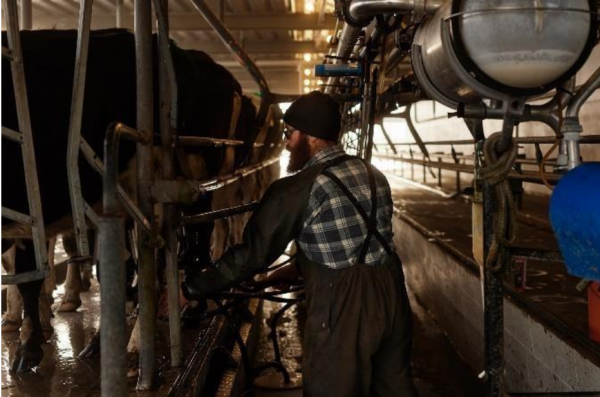
GHG modelling method
The farm was modelled in OverseerFM for 2002 compared to 2021 to show the changes over a 20-year period.
What have been the impacts of the changes?
Figure 1: Total biological emissions (methane and nitrous oxide) across the whole farm on a per ha/yr basis.
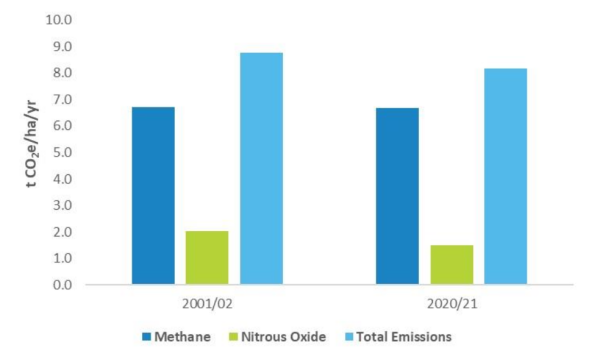
Figure 1 above shows a 27 percent decrease in total biological emissions from 2001 to 2021.
Figure 2: Total greenhouse gas emissions (t CO2e/ha) in 2002 compared to 2021.
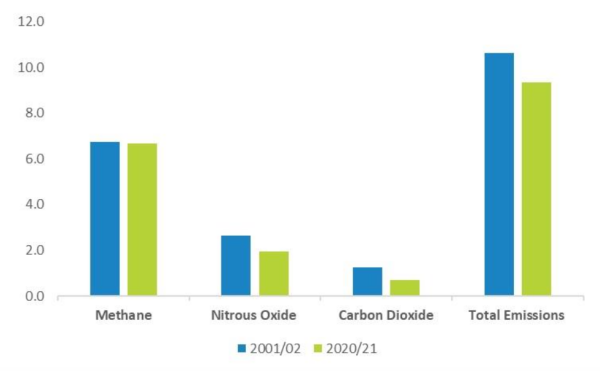
As shown in Table 3 below, the total methane reduces slightly, however the nitrous oxide emissions have reduced by 26 percent. This reduction in nitrous oxide is largely a result of reduced nitrogen fertiliser from 509 kg CO2e/ha to 115 kg CO2e/ha.
Table 3: The Paterson family farm emissions from OverseerFM
| Peterson Family Farm | 2002 | 2021 | % Change |
|
Total area (ha) |
126.9 | 126.9 | |
|
Total Methane (t CO₂e/ha/yr) |
6.72 | 6.67 | -1% |
|
Total Nitrous oxide (t CO₂e/ha/yr) |
2.64 | 1.95 | -26% |
|
Total CO₂e (t/ha) |
1.27 | 0.71 | -44% |
|
Total GHG (t CO₂e/ha/yr) |
10.6 | 9.3 | -12% |
|
Biological Methane (t CO₂e/ha/yr) |
6.72 | 6.67 | -1% |
|
Biological Nitrous oxide (t CO₂e/ha/yr) |
2.04 | 1.5 | -26% |
|
Total biological GHGs (t CO₂e/ha/yr) |
8.76 | 8.17 | -27% |
|
Total Methane (kg CH₄/ha) |
269 | 267 | -1% |
|
Nitrogen leached (kg N/ha/yr) |
87 | 57 | -35% |
In addition to the resulting reduction in emissions, the Patersons are seeing positive outcomes from trialling science methods within their farm system in collaboration with key players in the sector. These science trials include the detainment bund’s potential to reduce sediment and phosphorus loss. The other main science trial is the “Spikey Machine” that aims to increase utilisation of the urinary nitrogen by pasture species.
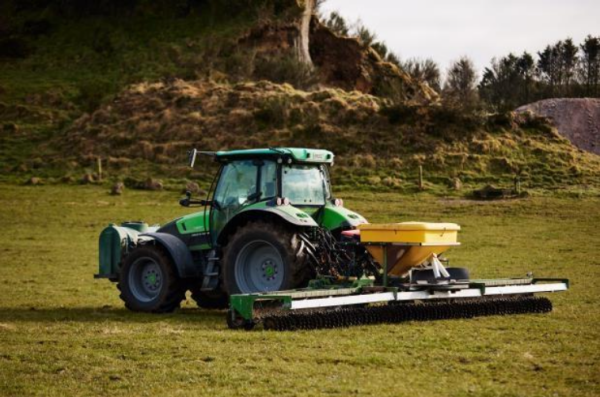
Jamie and Chris have long been contributors to the local community. An alumni winner of the Dairy Community Leadership Award, Chris is well-known in her local groups as a mentor who is passionate about nurturing young people in the dairy sector. Chris is also the secretariat of the Lake Rotorua Primary Producers Collective that was formed in 2011, chairperson of the Kaharoa Community Association, an executive member of Federated Farmers and Rural Women New Zealand. Jamie is the Chairman of Ngongotahā Lions Club, and a member of the executive for the Rotorua-Taupō Federated Farmers.
What process did they go through to make the changes?
The Patersons have undertaken some actions on-farm in collaboration with the Ministry for Primary Industries to participate in a 3 year Sustainable Food and Fibre Futures (SFF Futures) scientific trial on the benefits of the “Spikey Machine” post grazing. The machine treats cow urine patches with an inhibitor to allow for greater utilisation of the urinary nitrogen by pasture species and therefore a reduction in nitrogen leaching to water. Through involvement in the trial, Jamie and Chris hope that they will have access to future technology that will support their operation as
well as reduce their emissions.
The Patersons have also participated in a National Sustainable Farming Fund scientific trial, the
“Phosphorus Mitigation Project.” This includes a detainment bund which the National Institute of Water and Atmospheric Research (NIWA) is analysing and reporting on the benefits to the environment.
What other changes are planned?
With plans to continue to improve their system’s environmental footprint, the Patersons plan to:
- reduce their milk solid production from 105,000 to 100,000
- reduce the number of cows wintered from 152 to 135
- reduce nitrogen fertiliser from 110 kg N/ha to 60kg N/ha across the 110-ha milking platform
- remove all fodder crop
- establish 20% plantain in pasture sward over whole farm.
What drives or constrains these changes?
Protecting the natural environment is a significant value of the Patersons. Their approach to farming has been driven by their desire to look after the land they farm, particularly given their proximity to Lake Rotorua.
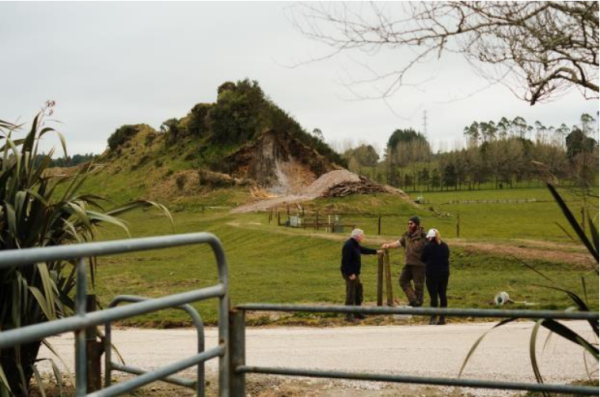
Farmers are encouraged to know their annual greenhouse gas emissions and have a plan in place for managing them. This is a key driver for Jamie and Chris, who have a plan in place to make on farm changes that meet the goals of both their farming operation and the industry as a whole.
What advice do they have for other farmers?
Jamie and Chris feel that as farmers it is important to not only be accountable for their actions, but also to be proud of the changes and improvements they make.
Chris and Jamie encourage farmers to participate in the change by seeking information and interacting with other farmers and regulators, so they can help shape the change rather than letting the change happen to them.
Published: July 22, 2025

